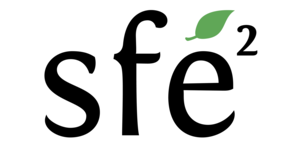Host institution : UMR EcoFoG – Écologie des Forêts de Guyane, Kourou, Guyane Française.
Internship Supervisor (s):
Irene CALDERON-SANOU (Chaire Scientifique, Université de Guyane, UMR EcoFoG). Contact : irene.calderon-sanou@univ-guyane.fr
Jérôme ORIVEL (DR, CNRS, CRBE-DEEP)
Internship description:
Pests—including organisms that cause disease or harm in humans, agricultural systems, and free-living plants and animals—pose significant ecological and socio-economic challenges, such as damage to livelihoods, human health issues, and loss of native biodiversity. While parasites are a natural part of all ecosystems and play essential roles in ecosystem function (1), some can become problematic pests, causing disease outbreaks that severely impact human, livestock, and wildlife health. Similarly, invasive species can degrade pastures and croplands, leading to economic harm, and are a leading cause of biodiversity decline worldwide due to their disruptive impact on ecosystems and ability to outcompete native species (2).
Monitoring pests and understanding the environmental factors driving their distribution is critical to identifying the conditions that promote their spread (3). This is especially important for organisms that disperse easily through the environment, as it allows predicting their potential range expansion across natural and human-altered landscapes in response to human activities, climate change and biodiversity change (4). Environmental DNA (eDNA) metabarcoding has transformed biodiversity assessment by enabling efficient, large-scale sampling across taxonomic groups. Combined with modeling approaches, this technology provides a powerful tool for examining the spatial distribution of disease agents and invasive species, offering valuable insights to guide management strategies for preventing disease outbreaks and the spread of invasive species (5–7).
Soil, as a reservoir for many pathogens and invasive organisms, often harbors pests that can affect various life forms (7,8). eDNA soil sampling can therefore serve as an effective indicator of pest distribution. This internship aims to evaluate the potential of existing eDNA data for detecting soil-borne pests across different biological kingdoms and to assess how human, abiotic, and biotic factors influence their distribution within terrestrial ecosystems in French Guiana.
Tasks:
To achieve this, the intern will use a comprehensive curated set of eDNA data from soils across various tropical habitats in French Guiana, including urban forests, savannas, pastures, and different types of natural forests. The intern will gather local and global databases on harmful parasites, and invasive species, by sourcing information online and liaising with local stakeholders. The intern will use models (SDMs, JSDMs and or machine learning models) to assess the relative importance of a set of humans, abiotic, and biotic variables on the distribution of different groups of pests (previously classified). Ultimately, the intern is expected to produce risk maps indicating the potential presence of pests in the region, providing insights to guide local management strategies.
Environnement:
The tropical forest of French Guiana spans 8 million hectares. It is a humid tropical rainforest, known for its exceptional biodiversity and minimal fragmentation, though it includes various types of local disturbances. The EcoFoG research unit (UMR EcoFoG) provides extensive knowledge on tropical forest ecosystems, supporting applications in ecosystem management, the role of the Guianese rainforest in the global carbon cycle, and the origins and maintenance of tropical forest biodiversity. UMR EcoFoG is also actively involved in the sustainable development of the timber sector. Additionally, it develops tools to support land management policies.
Skills required:
– Engineering or Master’s level (M2) student in Agronomy, Environmental Science, or Ecology
– Knowledge of (or strong interest) in modeling
– Proficiency in R (or at least basic skills)
– Organized and methodical, with strong communication and synthesis skills
– Autonomous, rigorous, and able to seek and communicate with local stakeholders
Salary: mandatory public service payment, approximately €580 per month for a 35-hour work week. 2.5 days of leave per month
Starting date and duration:
Early 2025 (flexible dates), duration of 4 to 6 months.
Deadline for applying: 1st December 2024
References
1. Mahé, F. et al. Parasites dominate hyperdiverse soil protist communities in Neotropical rainforests. Nat. Ecol. Evol. 1, 0091 (2017).
2. Roy, H. E. et al. IPBES Invasive Alien Species Assessment: Summary for Policymakers. https://zenodo.org/doi/10.5281/zenodo.7430692 (2023) doi:10.5281/ZENODO.7430692.
3. Cable, J. et al. Global change, parasite transmission and disease control: lessons from ecology. Philos. Trans. R. Soc. B Biol. Sci. 372, 20160088 (2017).
4. Guégan, J.-F., Poisot, T., Han, B. A. & Olivero, J. Disease ecology and pathogeography: Changing the focus to better interpret and anticipate complex environment–host–pathogen interactions. Ecography 2024, e07684 (2024).
5. Bass, D., Christison, K. W., Stentiford, G. D., Cook, L. S. J. & Hartikainen, H. Environmental DNA/RNA for pathogen and parasite detection, surveillance, and ecology. Trends Parasitol. 39, 285–304 (2023).
6. Bell, K. L. et al. Environmental DNA methods for biosecurity and invasion biology in terrestrial ecosystems: Progress, pitfalls, and prospects. Sci. Total Environ. 926, 171810 (2024).
7. Kestel, J. H. et al. Applications of environmental DNA (eDNA) in agricultural systems: Current uses, limitations and future prospects. Sci. Total Environ. 847, 157556 (2022).
8. Wall, D. H., Nielsen, U. N. & Six, J. Soil biodiversity and human health. Nature 528, 69–76 (2015).

Commentaires récents